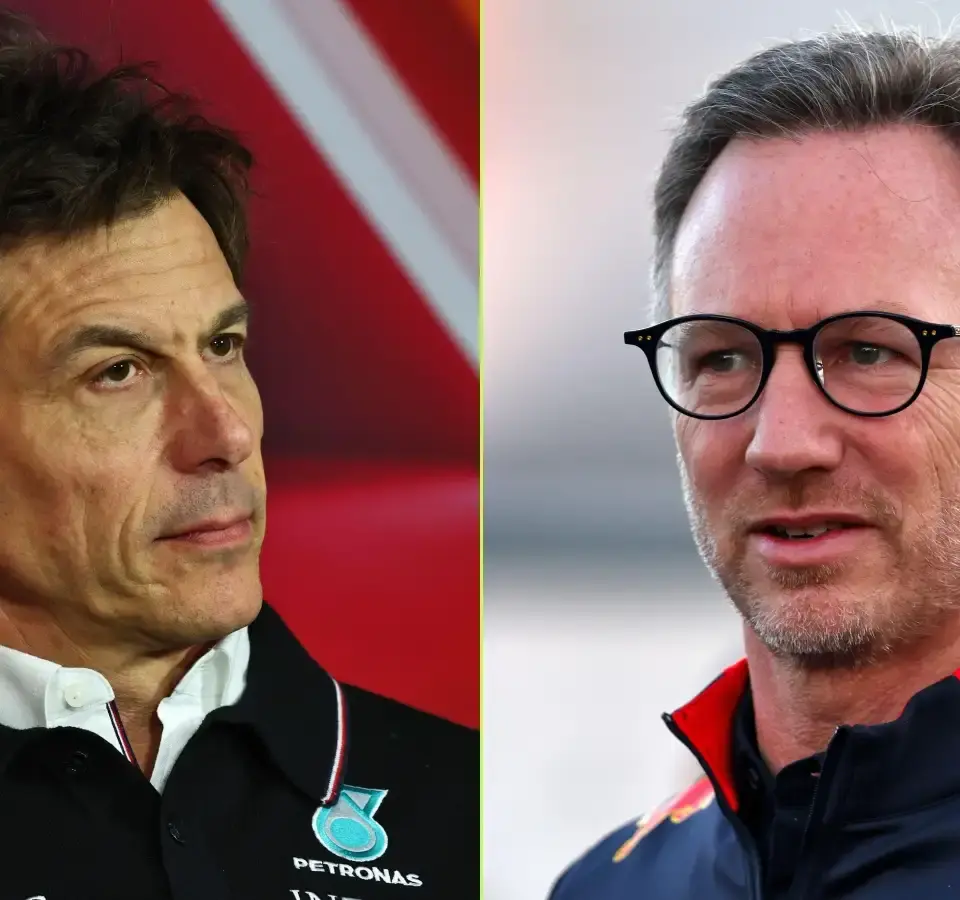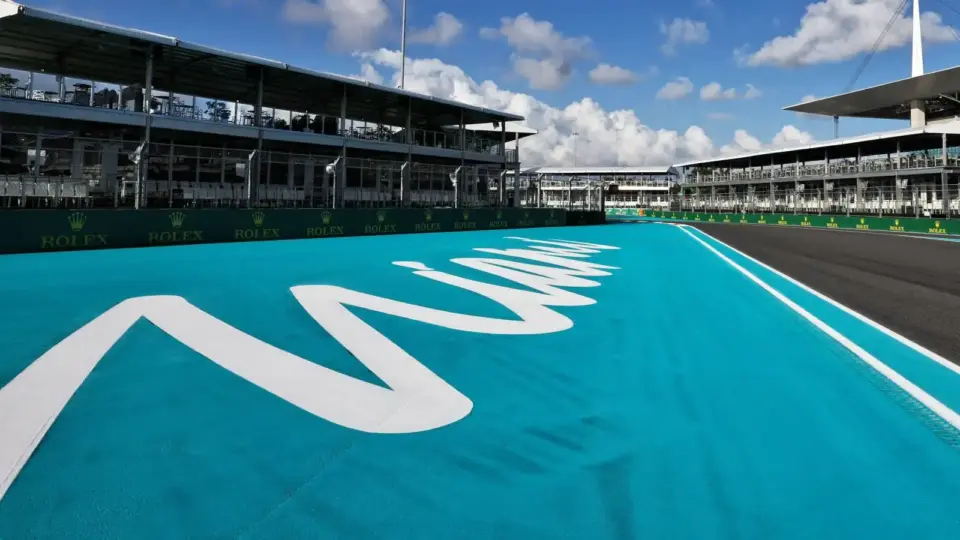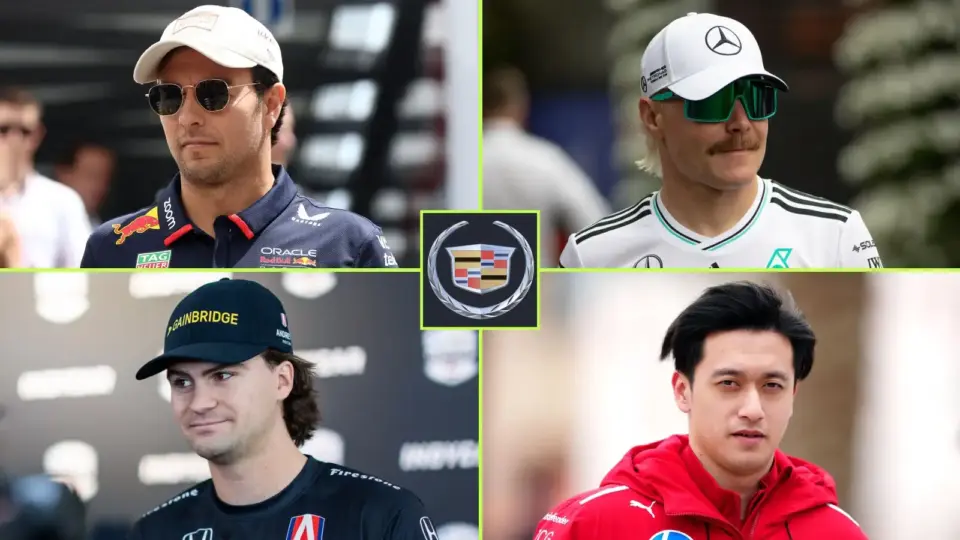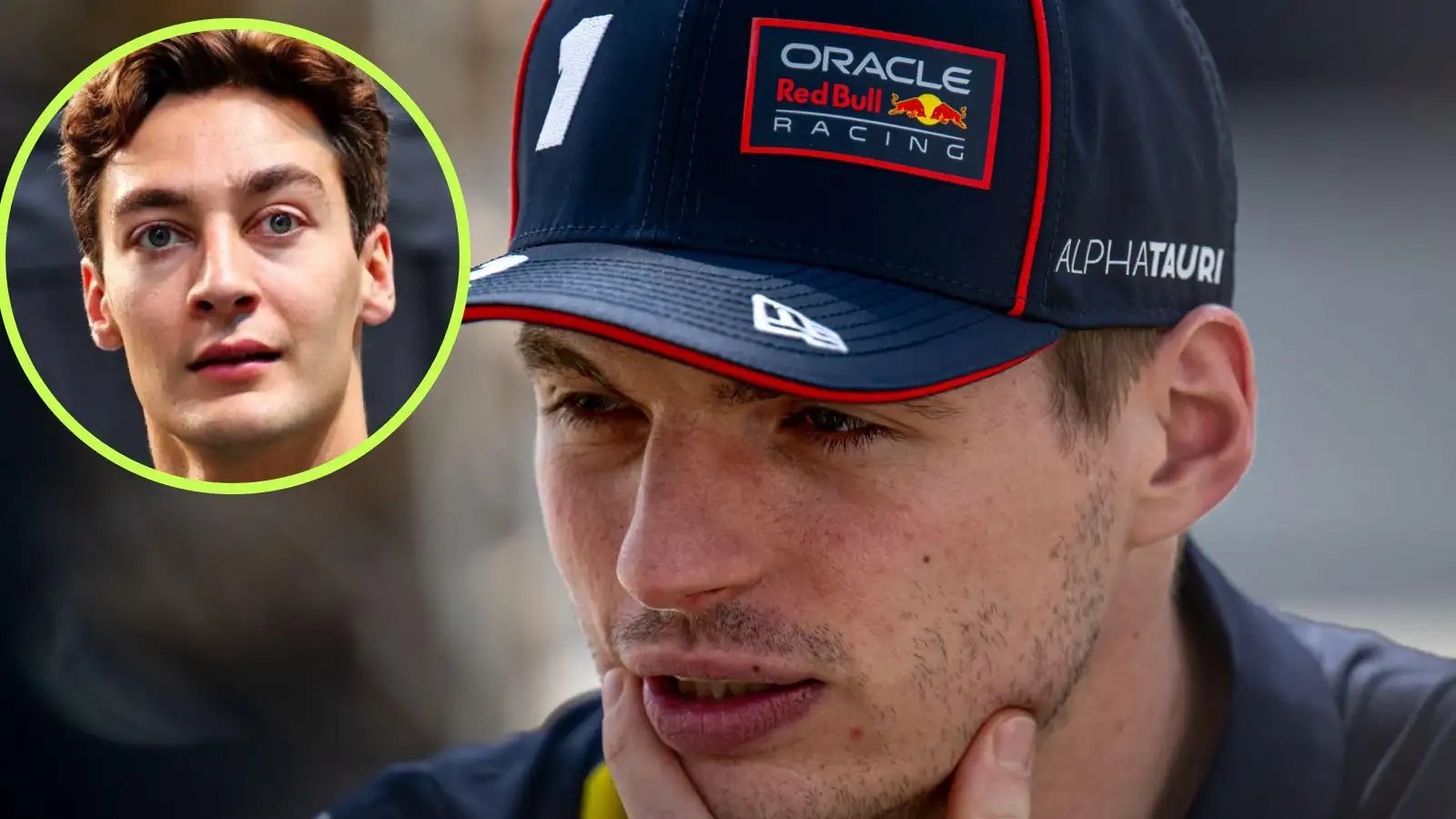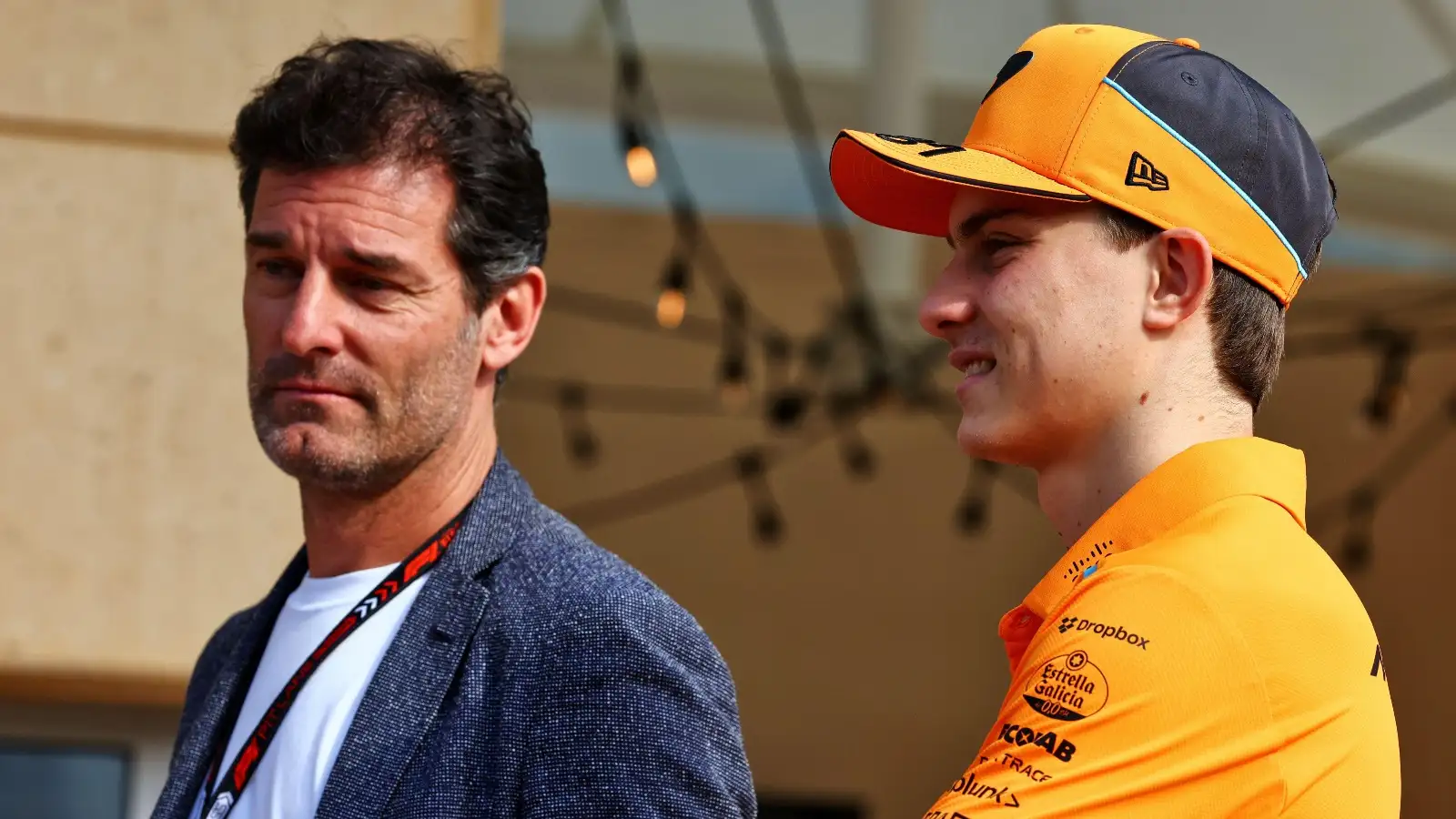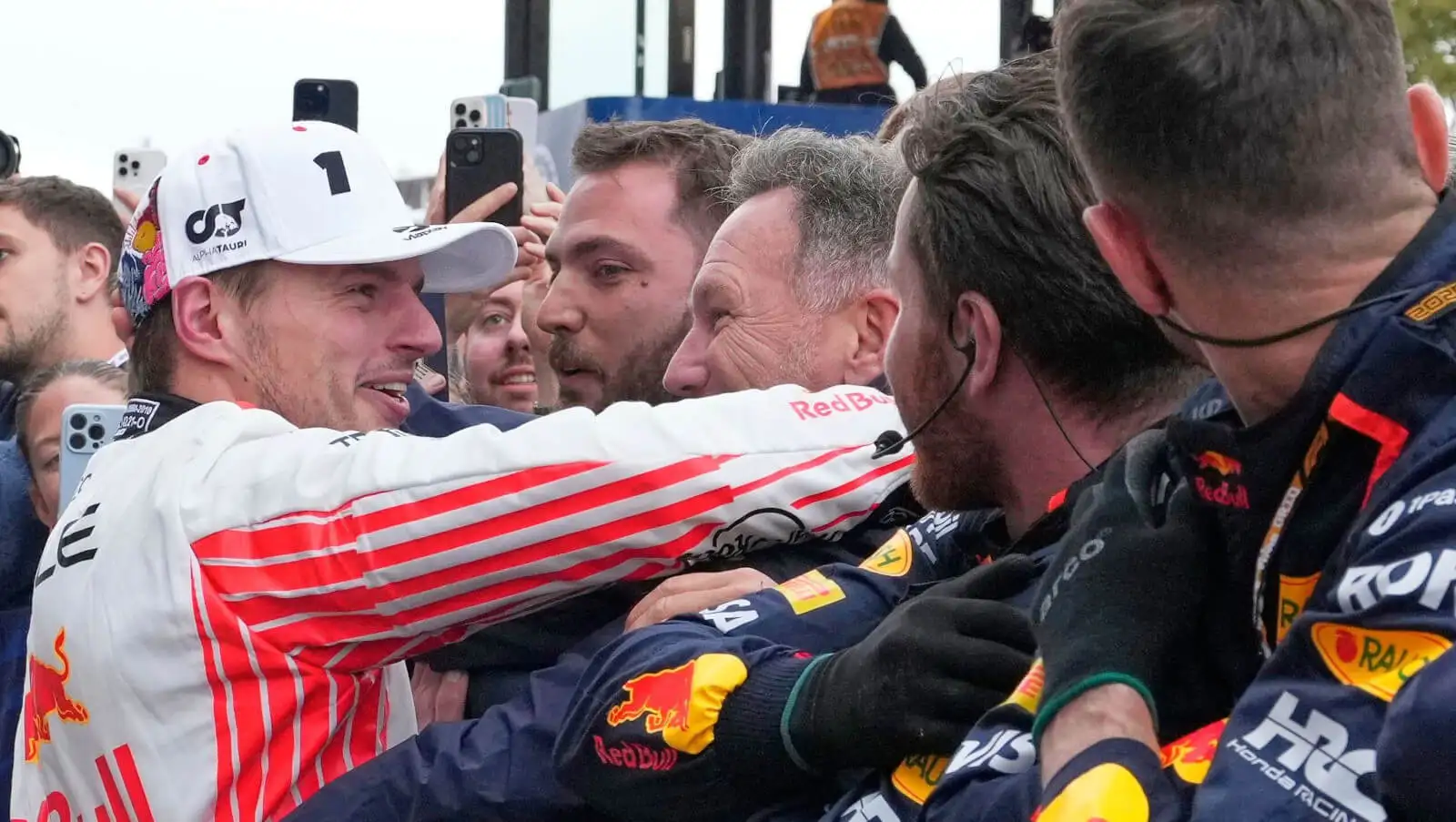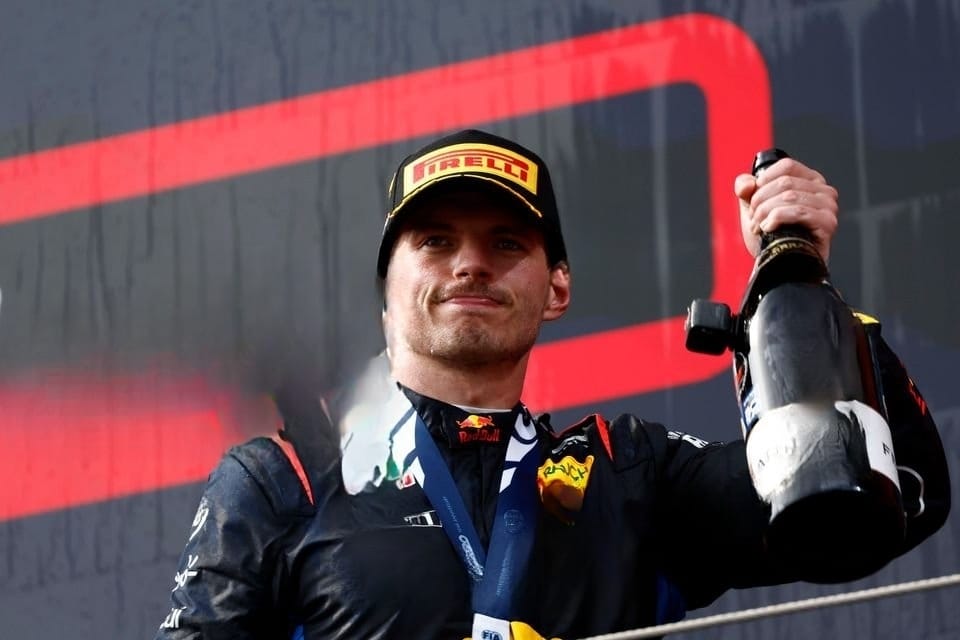Christian Horner and Toto Wolff, two titans of Formula 1, have once again found themselves at the center of a fiery debate. This time, it’s over the contentious engine discussions that have surfaced with the FIA. Horner recently dismissed Wolff’s comments as a ‘joke,’ adding layers to their already complex rivalry. But what’s driving this clash?
The issue roots back to the FIA’s last-minute agenda changes, sparking debate and disagreement. Wolff’s caustic remarks likened the situation to online political arguments, while Horner insists the discussions aren’t new. As F1 gears up for future seasons, the quest for a more efficient and thrilling sport seems to be the contentious ground between teams.
Horner’s Rebuttal
Christian Horner was quick to respond to Toto Wolff’s remarks, suggesting that the alleged ‘joke’ was misplaced. According to Horner, the engine concerns are far from being a spur-of-the-moment addition. Rather, they have been simmering for a while, a point he emphasizes to counter Wolff’s narrative.
Wolff’s criticism focused on the timing, as engine topics suddenly appeared on the F1 Commission’s agenda. He likened the surprise to unpredictable political commentaries, fueling an already hot debate. Yet, Horner strikes back, stating it was Mercedes who seemed confident about their work for the next year, suggesting a strategic motive behind their claims.
Horner further claims that his team called for these discussions two years ago, a contention that is now resurfacing. This long-standing issue, he argues, has not been their agenda to push through hurriedly but is a necessary step for the sport’s future.”
FIA and the Engine Strategy
The FIA finds itself at the heart of this controversy, grappling with concerns over excessive lift and coast strategies. Horner points out that such strategies, which depend heavily on battery power, could be detrimental to the spectacle of F1, frustrating both fans and drivers. These concerns are now shaping discussions for future regulations.
Horner warns that if a lot of lift and coast become the norm during races, it could hinder the sport’s dynamism. Such a scenario would be painful for fans to watch, and the FIA agrees it needs a rethink. Horner explains that they’ve conducted thorough research to avoid these boring scenarios.
He acknowledges that cars going through corners faster only amplify the problem, a challenge that designers will likely face in upcoming seasons. A thought that Horner adds, is pivotal as the FIA aims to craft regulations that preserve the thrill of racing.
Perspective from the Commission Meeting
The recent F1 Commission meeting in Geneva brought these issues to the forefront. Discussions on adjusting energy management for 2026 and financial constraints faced by Power Unit Manufacturers were key points. Such deliberations are critical as F1 seeks to balance performance and reliability in forthcoming regulations.
Participants acknowledged that examining details at the advisory committees was necessary. This reflects the complexity of the challenges ahead, especially considering the technical changes teams must adapt to. The FIA’s updates from Bahrain indicate a shared endeavor between various stakeholders for sustainable development.
The significance of the Bahrain meeting cannot be understated. The discussions there set the stage for ongoing adjustments required in F1’s technical landscape. Yet, the differing views among team principals highlight a divided paddock on the future direction, mirroring the sport’s competitive nature.
Proposed Solutions and Reactions
One proposed solution involves introducing a ‘push to pass’ system aimed at enhancing on-track action. Horner suggests it as a necessary component to maintain excitement, albeit an approach that should have been addressed years earlier. Still, there’s some time before the next season, allowing room for negotiation and solutions.
Other stakeholders in the sport are yet to reach a consensus, with voices like Wolff’s highlighting the urgency of the matter. For Horner, the upcoming ten months are crucial for aligning on decisions that uphold the sport’s legacy of high-speed thrills.
The push to pass proposal, if implemented, could electrify races, ensuring energy deployment adds strategic depth. This concept, though nascent, embodies the sport’s persistent innovation spirit. Horner seems optimistic that rational discussions will pave the path for implementation.
The Complexity of 2026 Regulations
Regulations for 2026 introduce multifaceted challenges, especially with the shift to improved energy strategies. Horner emphasizes the importance of these changes to enhance race quality and efficiency, a viewpoint stirring debates among teams. It’s an era where balance between speed and sustainability is increasingly vital.
Concerns over regulatory complexity are not new, but as details unfold, the stakes rise. Teams like Red Bull and Mercedes are under pressure to adapt swiftly, with eye on maintaining an edge in competitive performance. For many, this could redefine the engineering and strategic approaches.
The 2026 regulations herald a transformative period, prompting a reevaluation of priorities. Teams must carefully navigate through rule adaptations, considering implications on the season’s competitiveness. It’s a daunting task that pits tradition against emerging technological trends.
Financial and Performance Considerations
Financial constraints remain a significant concern, with performance expectations adding layers of pressure. Discussions during meetings revealed that manufacturers worry about the costs associated with meeting new standards. Such financial challenges could impact how resources are allocated moving forward.
Performance metrics are another hot topic, with stakeholders seeking assurances that new regulations won’t adversely affect racing quality. Maintaining competitive balance while ensuring financial health calls for creative solutions and collaboration.
The ongoing dialogue between the FIA and manufacturers demonstrates commitment towards a viable path forward. While not devoid of disagreements, there is a collective understanding that enhanced performance must coexist with sustainability.
The Future of F1: Balancing Speed and Spectacle
As F1 races towards 2026, the challenge lies in merging speed with spectacle without compromising safety. Horner and Wolff’s disputes underscore the broader conversation about the sport’s trajectory. The road ahead is laden with hurdles, but innovative thinking could redefine racing excitement.
This balancing act is evident as power units evolve, demanding new strategies both on and off the track. Enthusiasts are watching closely, eager to see how the sport adapts while preserving its core thrill. Insightful leadership will be crucial in steering F1 through these evolutionary times.
Horner’s optimism suggests that the sport is ready to embrace changes, though outcomes remain uncertain. This sentiment is shared by others, who anticipate a future where F1’s allure is magnified by strategic advancements.
Navigating the Competitive Dynamics
The tug-of-war between Horner and Wolff is emblematic of the competitive dynamics at play. These exchanges are a reminder of how intense rivalries shape decision-making. The latest engine argument is both a challenge and an opportunity for teams to vie for superiority.
In an arena where every advantage is pursued aggressively, such rivalries keep team principals keenly engaged. The dynamics often extend beyond the track, influencing regulatory and strategic conversations.
With the engine debate raising questions about the future, there’s intrigue in observing how leadership styles diverge to tackle these difficulties. It’s a battleground where influence and innovation often dictate outcomes.
What’s Next for the F1 Fraternity?
With technical and strategic shifts looming, teams continue to prepare for a future marked by decisive changes. The 2026 regulations will be a test of adaptability, pressing everyone to reassess their approaches.
Success in this evolving landscape depends on navigating through uncertainty with resilience. Teams will need to innovate continuously to sustain performance levels amidst regulatory transitions. This era marks a pivotal point in F1’s journey, requiring unified efforts for a prosperous competitive space.
The prospect of what’s to come serves as a catalyst for ongoing development. As stakeholders make their move, the sport anticipates a fascinating blend of tradition and transformation.
As the F1 world strides confidently into uncharted regulatory territory, Horner and Wolff’s dialogue remains pivotal. Their exchanges, fueled by competitive spirit, offer glimpses into the sport’s evolving blueprint. The future is poised with promise, where strategic clarity and spirited contests will define the race’s essence.
